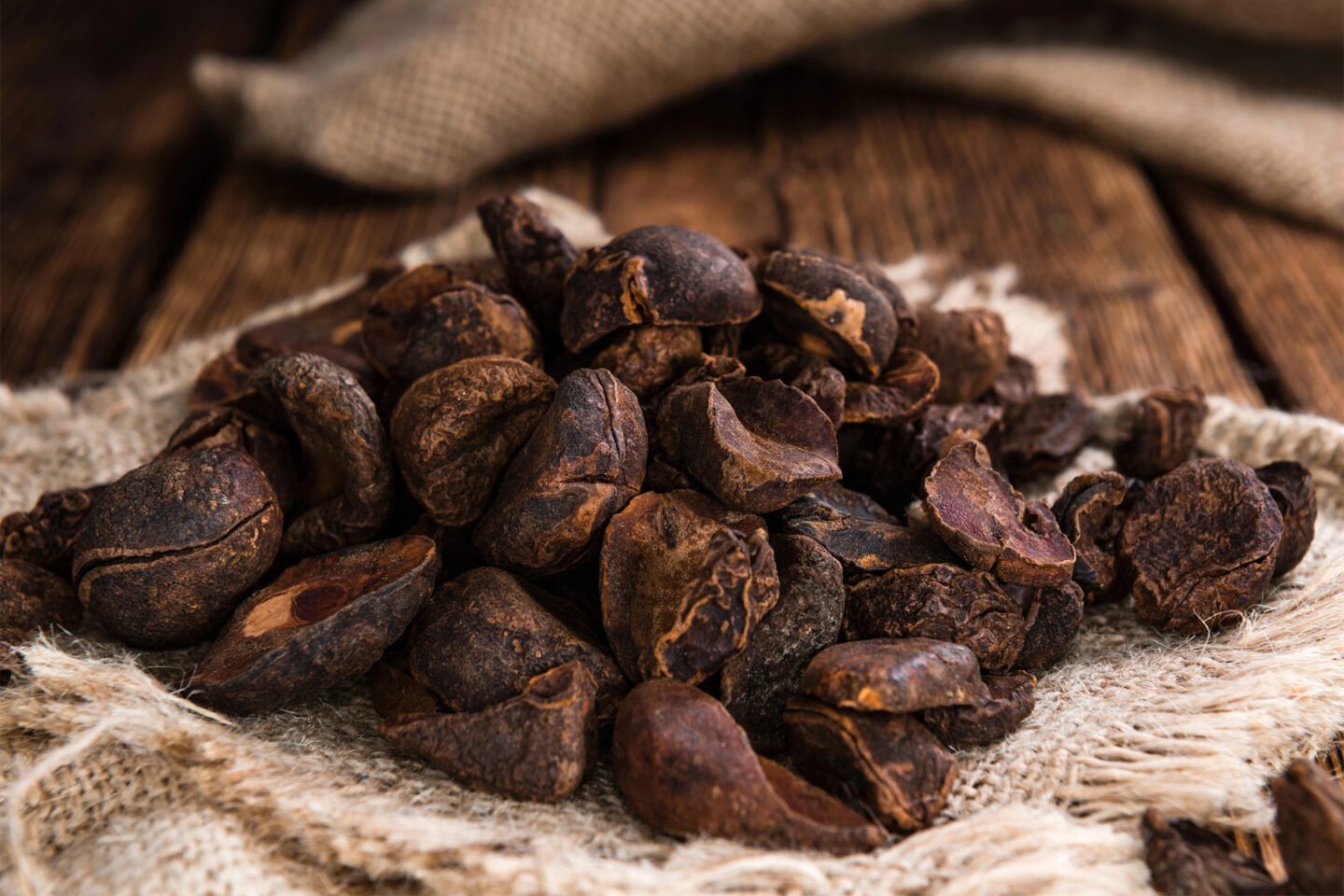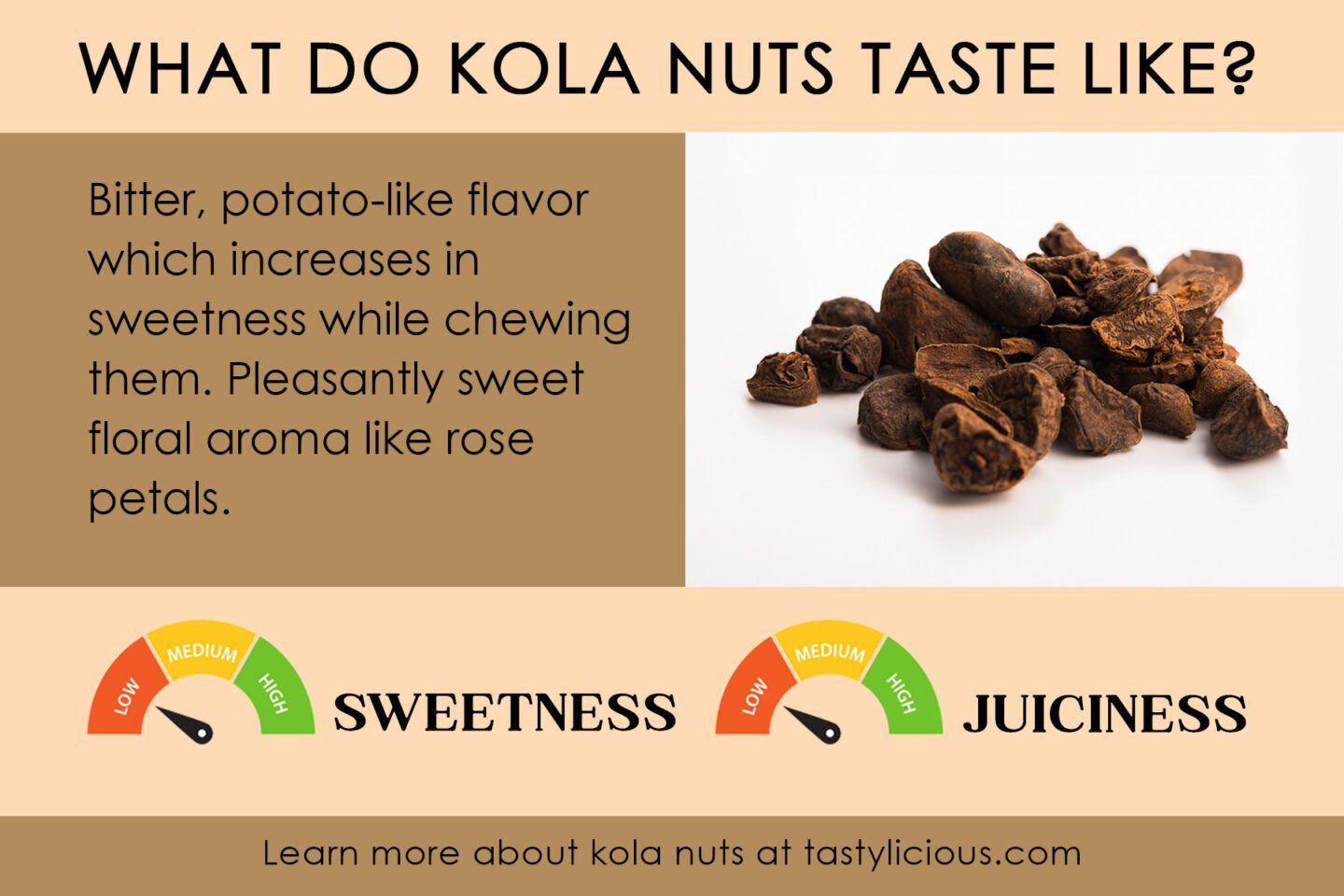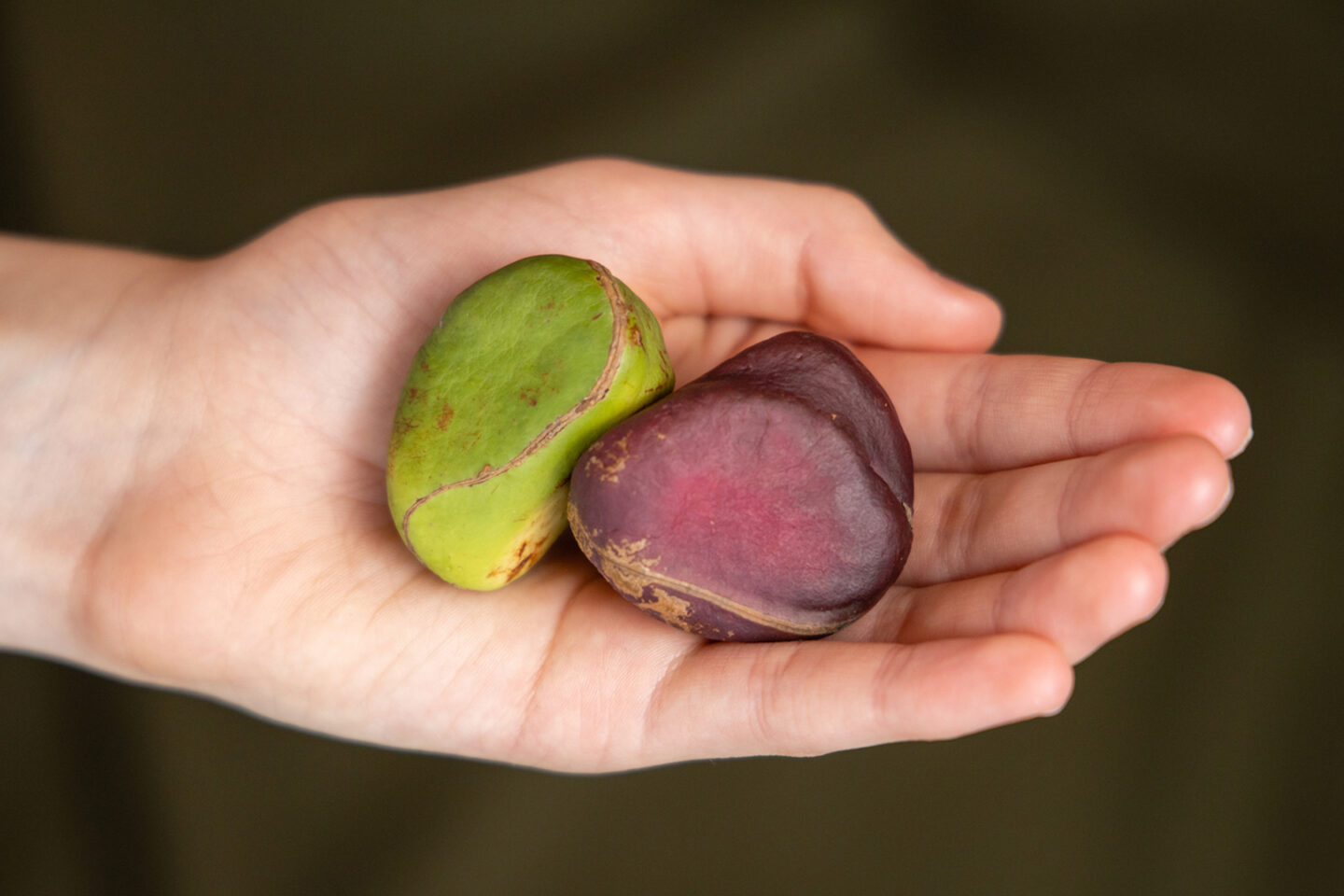The kola nut is a fruit harvested from the kola tree, which is native to Africa's tropical rainforests. It is also extensively cultivated in the American tropics. The fruit is packed with caffeine and was an original ingredient in Coca-Cola. If you're new to this ingredient, then you may be wondering, "What does a kola nut taste like?" We’re about to take a close look at this fruit's flavor, texture, and uses in the kitchen.

Table of Contents
What do kola nuts taste like?
The fresh kola nut has a bitter, potato-like flavor, which increases in sweetness the longer it is chewed. It has a sweet floral aroma that is reminiscent of rose petals. The nut’s texture is solid, and it takes a firm bite to chew through it.
There is a layer of white skin surrounding each nut that varies in taste depending on the variety. Some have no flavor at all and are best discarded, while others have a sweet taste and are pleasant to eat.

Did you know? A few minutes after eating kola nuts, many people find that water has a sweet taste to it.
Dried kola nuts are milder than the fresh variety and take on a nutmeg aroma. The dried nuts can be ground into a powder and used to make drinks. Bissy tea is made from the powder and has a mild, earthy, slightly herbaceous flavor with a medicinal aroma. The drink contains caffeine, which is a powerful stimulant to enhance mental alertness.
Tip: Kola nuts can vary in color from white through to a dark purple shade. Locals believe the pink ones have the highest caffeine levels.
How to Eat a Kola Nut
Kola nuts are housed inside a greenish-brown outer skin or pod. To open this up, use a sharp knife to slice the fruit in half lengthways. Once open, you'll see roughly 12 pieces of fleshy meat, similar to the insides of a chestnut. The fleshy exterior can be peeled off with your hands, revealing the prized nut. To eat a piece, take a small bite and begin chewing on it like gum. Locals will chew on it, then either spit it out or swallow it.
Popular Uses for Kola Nuts
- In many West African countries, the nut is chewed at home and for social gatherings, naming ceremonies, weddings, and funerals.
- Although it was originally combined with the coca leaves to make Coca Cola, both have long since been replaced by derivative ingredients. The Cola bean is still used in some other commercial energy drinks, marketed for their stimulating effects.
- The powder can be used to make natural cola drinks and teas. It is also excellent when used as a meat rub, combined with paprika, fennel, and cumin.

The former has colors ranging from black to red to white.
while the latter goes from green (raw) to brown when ripe. Source.
Related reading:
What do cashew apples taste like?
What does a black sapote taste like?
What do ice cream beans taste like?
What does a hala fruit taste like?
Health Benefits
- Kola nuts are best known for improving mental alertness as they contain 1-2% theobromine and 2-3% caffeine.
- They contain micronutrients such as magnesium, calcium, and potassium.
- Chewing the nut is believed to boost metabolism, increase circulation, aid digestion, and also provide antibacterial benefits.
Source: www.medicalnewstoday.com/articles/319626
6 Fast Facts About Kola Nuts
- The kola nut is also known as the cola nut, bissy nut, and guru nut.
- The plant is related to okra, durian, chocolate, and cotton.
- Its botanical names are Cola acuminata and Cola nitida which are part of the Malvaceae family. The tree can grow to a height between 40 and 60 feet and is considered an evergreen.
- Theobromine and caffeine are substances that can be found in coffee, tea, and chocolate.
- Each fruit produced by the kola tree contains 2 to 5 kola nuts.
- The plant that produces kola nuts should not be confused with the Garcinia kola (aka bitter kola), which is a flowering plant native to West and Central Africa.
Summing Up
The kola nut isn’t commonly found outside of Africa and South America. Although it is rarely used as an ingredient in cooking, it is useful if you need an energy boost. It tastes bitter at first, but if you continue chewing, you'll find it becomes more palatable and a little sweeter.
Disclaimer: We don't recommend using kola nuts without getting medical advice first. If you're traveling to a foreign country and are considering trying these nuts, then tread with caution. You have no idea the strength of what you're eating, so it could have unexpected results. Even the milder varieties are known to give people an unpleasant racing heart.
Are you considering tasting a fresh kola nut or the dried powder? Please let us know in the comments below.

Leave a Reply